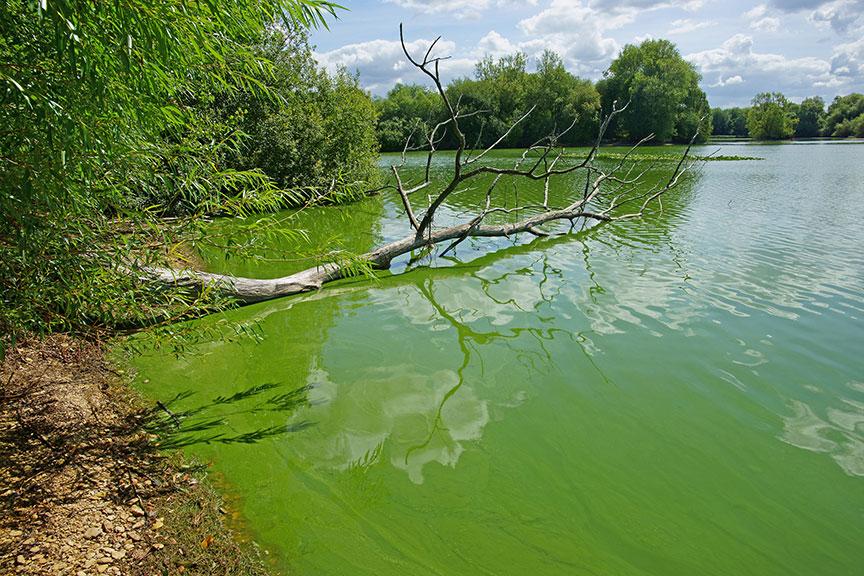Common Equine Hepatotoxins in Central Kentucky
Liver disease in horses can occur due to many causes, including infectious agents, neoplasia and toxicants. Clinical signs are often nonspecific, and can include inappetence, depression, colic, weight loss, weakness, icterus (jaundice), yawning, head-pressing, abnormal behavior and coagulation abnormalities. Toxic agents can vary tremendously depending on an animal’s environment and geographic location. This article describes some of the hepatotoxicants (liver toxins) that affect horses in central Kentucky:
Pyrrolizidine alkaloids (PAs)—PAs are found in a variety of plant species and can cause chronic liver disease and eventual liver failure with prolonged ingestion. Due to the liver’s immense reserve and regenerative capacity, horses can appear normal until greater than 80% of the liver is affected. Severe clinical signs can then develop rapidly, giving the appearance of acute disease. PA-producing plants found in Kentucky include ragwort, butterweed, groundsel and rattlebox (Senecio, Packera, and Crotalaria spp.). Most PA-producing plants are unpalatable when fresh, although horses may eat them when other forage is lacking. The plants become palatable when dried and can pose a greater threat in hay. Poisoning can be prevented by providing high-quality forage and checking hay for weeds.
Cocklebur (Xanthium strumarium)—Cocklebur seedlings (two-leaf stage) contain large quantities of the toxin carboxyatractyloside. Seedlings emerge in early spring when other forage is limited and are readily consumed by horses. High concentrations of the toxin are present in the seeds, and horses have been poisoned by cocklebur seed contamination of hay or grain. Cocklebur poisoning can be prevented by providing high-quality forage and inspecting hay and grain for cocklebur seeds.
Aflatoxin—A mycotoxin produced by species of Aspergillus molds under certain conditions. Aflatoxin can contaminate corn, oats or any other high-energy feedstuff. Mold can contaminate crops growing in fields, particularly if the plants have been stressed by drought, frost, insects or other harmful elements. Warm and damp storage conditions and pests also facilitate mold growth. Aflatoxin can be present in toxic concentrations with or without visible mold. To avoid the risk of mold and mycotoxins, feed should be purchased from reputable sources; stored in a cool, dry location; and adequately protected from rodents and other pests.

Blue-green algae (cyanobacteria)—Under the right environmental conditions, these microscopic organisms normally present in ponds, lakes, streams, oceans and other natural water sources can undergo rapid growth (harmful algal blooms, HABs). Certain species produce toxins, including hepatotoxins (e.g., microcystins and nodularins). Horses can die rapidly after ingestion, and animals are often found dead in or near water sources. Excess nitrogen and phosphorus from animal waste or fertilizer runoff can facilitate HABs. Horses should be provided with fresh, clean water and ponds or other natural water sources should be fenced off to prevent blue-green algae poisoning.
Amanitin—Toxin found in certain species of mushrooms, including Amanita, Galerina and Lepiota spp. Mushrooms can appear suddenly in pastures and occasionally in stalls. Horses are less likely to ingest mushrooms than other animal species, but the best way to prevent poisoning is to monitor pastures and remove mushrooms.
Certain medications (e.g., phenylbutazone, flunixin, acetaminophen, salicylates, antifungals and many others) can cause liver damage, especially if administered in high doses, for prolonged periods of time or to animals with pre-existing conditions. Accurate dosing and careful consideration of medication risks versus benefits can help minimize chances of adverse effects. Many other substances can cause liver damage and may be more common in different geographic areas. Consultation with a clinical veterinary toxicologist should be considered when toxicosis is suspected.
Source: July Equine Disease Quarterly. Megan Romano, DVM, DABVT, is the toxicology section supervisor at the University of Kentucky Veterinary Diagnostic Laboratory.
